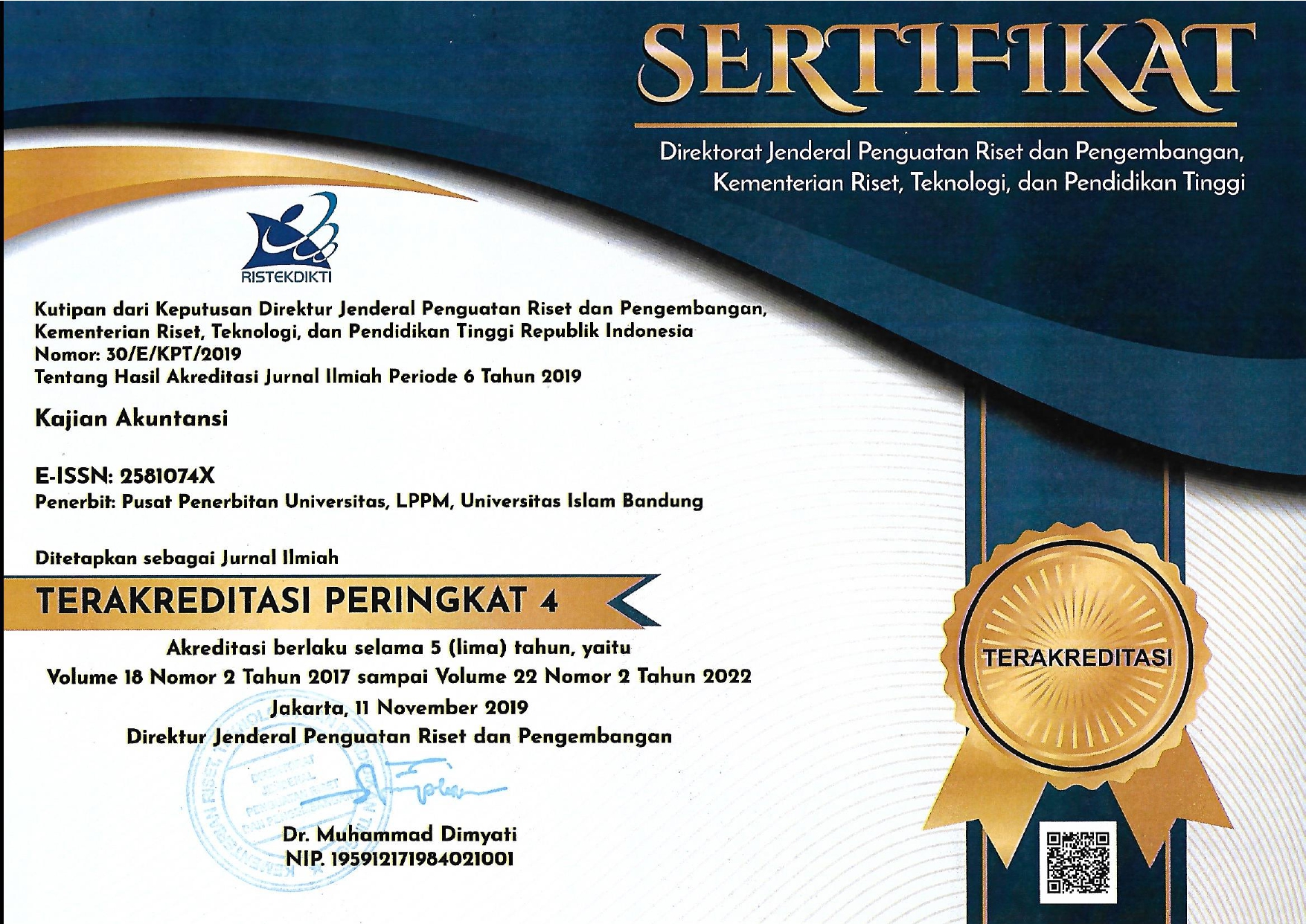Business Strategic During Pandemic for DO IT Chocolate - University of Pamulang
Abstract
Keywords
Full Text:
PDFReferences
Anggraeni, F. D., Hardjanto, I., & Hayat, A. (2015). Pengembangan Usaha Mikro, Kecil, dan Menengah (UMKM) Melalui Fasilitas Pihak Eksternal dan Potensi Internal (Studi Kasus pada Kelompok Usaha Emping Jagung di Kelurahan Pandanwangi Kecamatan Blimbing Kota Malang). Jurnal Administrasi Publik (JAP), 1(6), 1286-1295.
Assauri Sofjan. 2017. Manajemen Pemasaran, Cetakan ke 15. Depok: Penerbit PT Raja Grafindo Persada.
Bastian, A. (2015). Analisis Strategi Bisnis dan Perancangan Strategis Sistem Informasi pada Perguruan Tinggi Swasta (Studi Kasus : Universitas Majalengka). Infotech Journal, 1(1), 55-61.
Fitri, Y. (2019). Analisis Efisiensi Biaya Produksi Dengan Penggunaan Biaya Standar Dalam Meningkatkan Rasio Net Profit Margin (Studi Empiris Pada Umkm Dendeng Sapi Di Banda Aceh). Jurnal Ilmiah Mahasiswa Ekonomi Akuntansi, 4(2), 334-343.
Jermias, J. (2008). The relative influence of competitive intensity and business strategy on the relationship between financial leverage and performance. The British Accounting Review, 40(1), 71-86.
Joewono, H. (2006). New Business Creation & Entrepreneurship. Jakarta: Arrbey.
Kaplan, A. (2012). Invited Comment On The Theme Of the Special Issue Social Media: Back to the Roots and Back to the Future. Journal of Systems and Information Technology, 14(2), 101-1-4.
O'Brien, J. (2003). The Capital Structure Implications of Persuing a Strategy of Innovation. Strategic Management Journal, 24(5), 415- 431.
Ulya, H. N. (2020). Alternatif Strategi Penanganan Dampak Ekonomi Covid-19 Pemerintah Daerah Jawa Timur Pada Kawasan Agropolitan. el Barka: Journal of Islamic Economic and Business, 3(1), 80- 109.
Rahman, M.S., & Suyadi, I. (2014). Pengaruh Kepercayaan dan Kenyamanan Terhadap Keputusan Pembelian. Jurnal Administrasi Bisnis, 8(2), 1-7.
Riyadi, Mahkota, A. P., AbdelFattah F.A., Bag, S & Gani, M.O. (2021). Survival strategies of SMEs amidst the COVID-19 pandemic: application of SEM and fsQCA Journal of Business & Industrial Marketing.
Rosmadi, M.L.N. (2021). Penerapan Strategi Bisnis di Masa Pandemi Covid-19, Jurnal IKRA-ITH Ekonomika, 122-127
Wijoyo, H.,Ariyanto, A., Wongso, F., Indrawan, I., Musnaini, Akbar, M. F., . Grafita Ryana Devi, W. S. (2021). Strategi Pemasaran UMKM Di Masa Pandemi. Sumatra Barat: INSAN CENDEKIA MANDIRI.
DOI: https://doi.org/10.29313/ka.v24i1.9492
Refbacks
- There are currently no refbacks.
Copyright (c) 2023 Kajian Akuntansi
Indexed by:
This work is licensed under a Creative Commons Attribution-NonCommercial-ShareAlike 4.0 International License.










